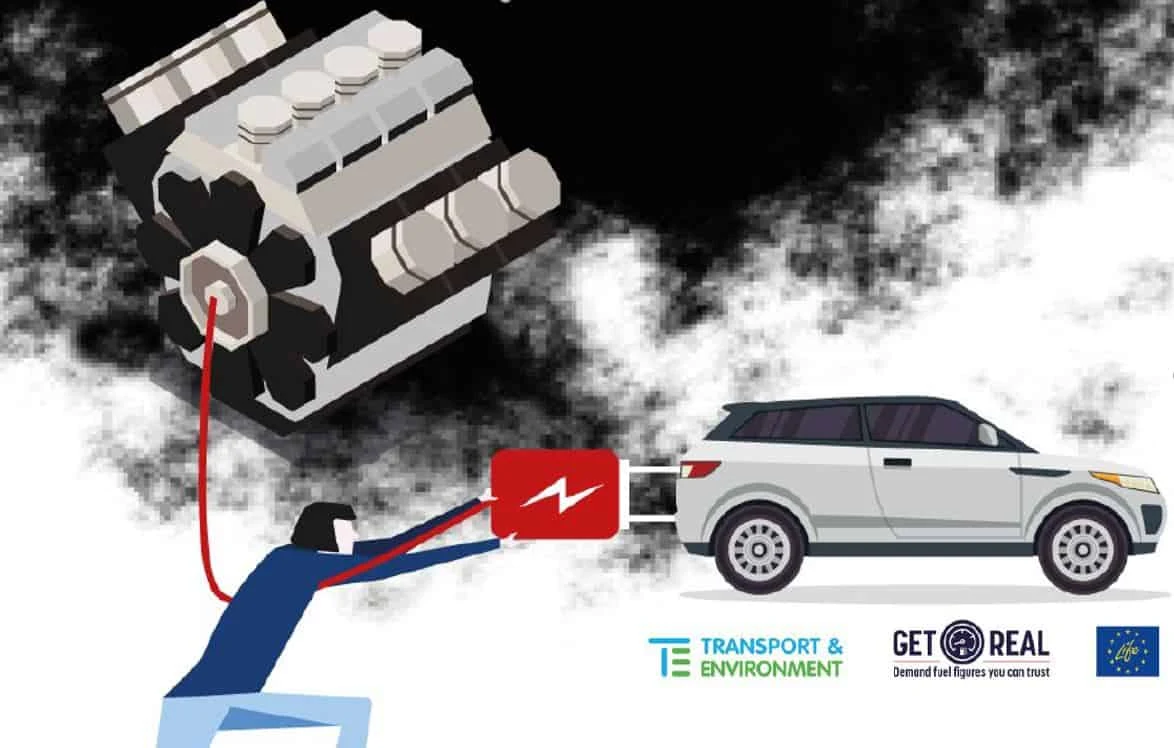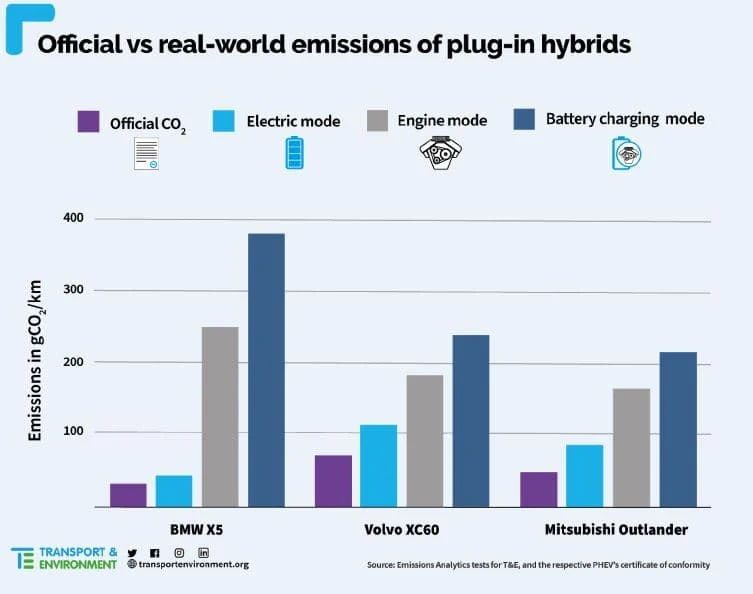Are Plug-in hybrid vehicles leading to a new dieselgate?

Plug-in hybrid vehicle (PHEV) sales are skyrocketing in Europe with half a million expected to be sold this year alone. Carmakers need to sell low emission vehicles to comply with the 2020/21 EU car CO2 standard which took effect in January 2020. But are these cars as low emission in the real world as in carmaker test labs? Or are PHEVs high emitting vehicles that carmakers sell as a compliance trick to meet the CO2 targets?
To find out, Transport & Environment has commissioned Emissions Analytics to test three of the most popular PHEVs sold in 2019: a BMW X5 (longest EV range PHEV available), a Volvo XC60 and the Mitsubishi Outlander. This report presents the test results and what they mean for the CO2 credentials of this technology.
Even in optimal test conditions PHEV emissions are 28-89% higher than advertised
Many Plug-in hybrid vehicles on sale today tout very low CO2 emissions - a third, or less of an equivalent conventional combustion engine car. However, none of the PHEVs tested achieve such low figures in the real world even when tested on the mildest of the tests and starting with a fully charged battery.
Of the three PHEVs tested by T&E the best performer on this test was the BMW X5, but it still exceeded official CO2 values by 28%, emitting 41g/km. On the same mild test, the XC60 and Outlander emitted 115g/km and 86g/km respectively, a gap of 62%- 89% compared with official WLTP values.
In engine mode PHEVs emit up to 8 times more than advertised
On tests where the car started with an empty battery (i.e. the internal combustion engine was powering the car) CO2 emissions of the XC60 and the Outlander surged up to 184g/km and 164g/km respectively, or almost 3-4 times higher than official values. The CO2 emissions of the X5 increased even more, up to 254g/km , or eight times higher than official values.
In addition, the report also highlights that Geo-fencing could increase PHEV emissions by 12 times; and some PHEVs are not at all designed for dynamic electric driving.
Author: Anna Krajinska
Expert group: Julia Poliscanova, Lucien Mathieu, Carlos Calvo Ambel
In summary: the information presented in this report shows that PHEVs fail to achieve the advertised CO2 emission and fuel economy savings advertised in the real world. This allows manufacturers to unjustly benefit from low CO2 emissions of these vehicles, making it easier for them to meet their fleetwide CO2 targets. Consequently, undermining the 2020/21 CO2 regulation and reducing the number of real zero emissions cars that need to be sold.
If PHEVs are to aid the transition to zero-emission mobility in the 2020’s, urgent changes to EU laws - notably around testing and CO2 credits in vehicle standards - are necessary to make sure that PHEVs supplied on the EU market are not just ‘compliance vehicles’. Official CO2 and fuel consumption figures have to reflect the actual usage of these cars in the real world.
Manufacturer’s also have to make better PHEVs which are capable of driving much longer distances under electric only operation, under all conditions of use. To further encourage demand for better PHEVs, Member States should reform purchase and tax incentives to ensure that only long range PHEVs can benefit. It is especially important to reform company car incentives given that these make up more than three quarters of PHEV sales today.









Post a Comment